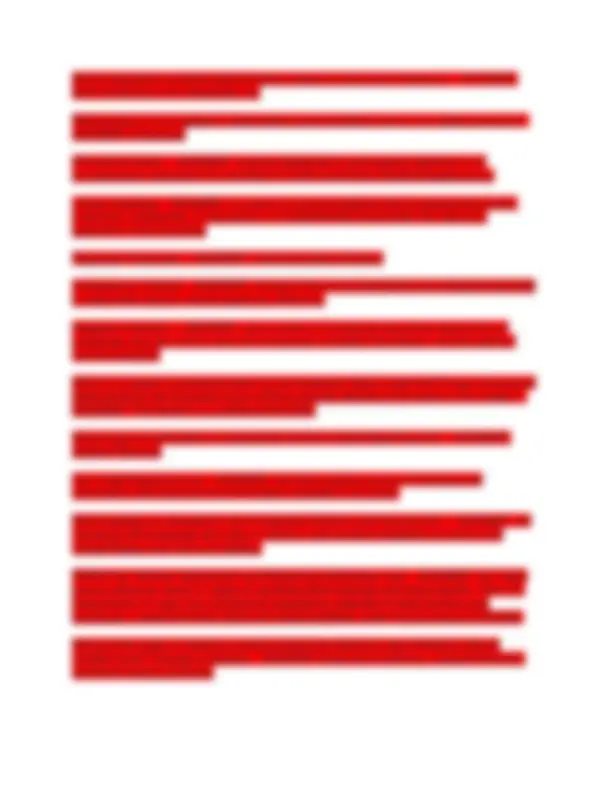





Study with the several resources on Docsity

Earn points by helping other students or get them with a premium plan


Prepare for your exams
Study with the several resources on Docsity

Earn points to download
Earn points by helping other students or get them with a premium plan
Community
Ask the community for help and clear up your study doubts
Discover the best universities in your country according to Docsity users
Free resources
Download our free guides on studying techniques, anxiety management strategies, and thesis advice from Docsity tutors
C233 Employment Law Questions With Correct Detailed Answers 2025.pdf
Typology: Exams
1 / 6

This page cannot be seen from the preview
Don't miss anything!




Which constitutional provision mandates that federal regulations have priority over state law? - ANSWER- Supremacy Clause Which doctrine is used by U.S. courts to align current cases with prior legal decisions? - ANSWER- Stare Decisis Stare Decisis (precedent) - ANSWER- "Let the decision stand"...courts generally follow the decisions of lower courts in similar cases that set a precedent Two corporations have combined their management and operations into a single place with 30 total employees. Which type of business relationship is formed that now requires both companies to comply with federal employment law? - ANSWER- integrated enterprise integrated enterprise - ANSWER- A business environment in which operations of two or more employers are so intertwined that they can be considered as a single employer for purposes of federal statutory coverage and liability. Limited Liability partnership - ANSWER- a type of partnership in which all partners are limited partners Which test is used to distinguish an independent contractor from an employee? - ANSWER- Economic Realities Test The employee handbook used by a temporary employment agency stated, "Employees may not be terminated except after first receiving an oral warning, then a formal written warning." Which principle is demonstrated in the handbook? - ANSWER- Implied Contract Implied Contract - ANSWER- A contract that comes about simply from actions of the parties. No employee with a company has ever been terminated without strict adherence to the progressive discipline procedures outlined in the employee handbook.How does the employee handbook apply in this situation? - ANSWER- An implied Contract with employees What determines employer liability under the respondeat superior doctrine? - ANSWER- Scope of employment
Which term indicates that an employer may terminate an employee at any time, for any legal reason, without incurring liability? - ANSWER- Employment-at-will Which type of employment contract is created by the actions of the employer and employee rather than through a formal contract negotiation? - ANSWER- Implied Contract An employee claimed the need for special treatment based on Title VII of the Civil Rights Act of 1964. What is the first question a human resources professional should ask to determine if this law applies to the employee? - ANSWER- Does the employee meet the eligibility requirements? A women's shelter hires only women as intake specialists and is being sued for disparate treatment. Which role does human resources have in relation to the Equal Employment Opportunity Commission (EEOC) in this scenario? - ANSWER- showing bona fide occupational qualification Bona Fide Occupational Qualification (BFOQ) - ANSWER- a necessary (not merely preferred) qualification for performing a job A 65-year-old woman was passed over for a job. When she inquired about this, the employer told her, "We're looking to create a younger workforce."Which type of discrimination is reflected in the scenario? - ANSWER- Disparate Treatment Disparate Treatment - ANSWER- results when employees from protected groups are intentionally treated differently An organization requires that job applicants have at least a bachelor's degree. Applicants in a protected class under Title VII claim that this requirement puts them at a disadvantage. Which rule determines whether there was substantial impact on the protected class? - ANSWER- Four- Fifths Rule Four-fiths rule - ANSWER- The four-fifths rule prescribes that a selection rate for any group (classified by race, orientation or ethnicity) that is less than four-fifths of that for the group with the highest rate constitutes evidence of adverse impact (also called 'disparate impact'), that is, discriminatory effects on a protected group. Which practice is descriptive of a church requiring clergy to be of a particular denomination? - ANSWER- Bona Fide Occupational Qualification hostile work environment - ANSWER- a form of sexual harassment in which unwelcome and demeaning sexually related behavior creates an intimidating and offensive work environment reverse discrimination - ANSWER- Discrimination against the majority group
What is the common name of the Labor Management Relations Act of 1947? - ANSWER- Taft-Hartley ACt Taft-Hartley Act - ANSWER- Act that provides balance of power between union and management by designating certain union activities as unfair labor practices; also known as Labor-Management Relations Act (LMRA) Clayton Act - ANSWER- A federal regulation intended to prevent specific business actions that might prohibit competition, e.g., tying agreements and exclusive agreements Which restraints does the Labor Management Reporting and Disclosure Act include? - ANSWER- Unions are required to hold officer elections every three years, and candidates must have access to voter rolls What are the employer's responsibilities after the National Labor Relations Board (NLRB) has authorized a union election? - ANSWER- Provide the NLRB with contact information of workers eligible to vote in the election Which three outcomes are legally possible if parties cannot resolve one or more mandatory issues during collective bargaining negotiations and reach a deadlock? Choose 3 answers - ANSWER- 1) Union May call a strike 2)The employer may lock out members of management 3)Either party may resume discussions with the other. Collective Bargaining Agreement - ANSWER- a contract entered into by an employer and a union during a collective bargaining procedure General duty clause - ANSWER- Standard that requires employers to provide jobs and a workplace environment that are free from recognized safety and health hazards that could potentially cause of death or serious physical harm; this standard also requires employers to comply with all OSHA rules, regulations, and standards Permissive bargaining issues - ANSWER- Issues that may be raised, but neither side may insist that they be bargained over. Unfair labor practice (ULP) - ANSWER- Action by an employer or a union that restrains or coerces employees from exercising their rights to organize and bargain collectively, or to refrain from doing so mediation - ANSWER- A procedure for resolving collective bargaining impasses by a mediator (third party) with no formal authority; acts as a facilitator and go-between in the negotiations Pre-adverse Action - ANSWER- Requirements under FCRA that the employer notify a candidate within 3 business days of the intent to take negative action based on the credit report
public policy exception - ANSWER- Certain objective relating to health, morals, and integrity of the government that the law seeks to advance and uphold employer - ANSWER- One who employs the services of others in exchange for wages